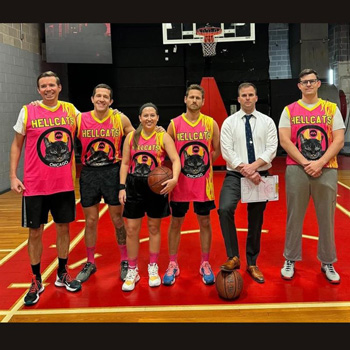Dr. Cancienne specializes in the treatment of sports injuries. These injuries don’t always occur in young athletes competing on the athletic field. In fact, the majority of these injuries occur in weekend warriors or those exercising for their general health. In addition, they also can occur playing a variety of organized sports. They can be the result of accidents, inadequate training, insufficient stretching or warming up, or unanticipated collisions or cutting activities. The majority of sports injuries are soft tissue strains and sprains; however, some can be more serious such as fractures and dislocations.
In general, the most common treatment for the above injuries are rest, ice, compression, and elevation. This is known as RICE therapy.
- Rest: Modify and avoid the activities and movements that cause pain.
- Ice: Apply ice packs to the injured area to help reduce swelling, inflammation, and pain. There should always be a layer of material such as a towel in between the ice and the affected area to prevent frost bite. Ice the affected area for 15-20 minutes at a time, and then give the area a 20 minutes break. Repeat this as needed.
- Compression: compressive dressings and wraps can help reduce swelling along with elevation
- Elevation: Elevate the injured part above your heart level to reduce swelling and pain.
- A particularly part of injury treatment and rehabilitation that Dr. Cancienne emphasizes is on injury prevention. Some of the following measures can help prevent common sports injuries and allow you to fully participate in your desired sports and activities safely
- Follow a home exercise that focuses on stretching and strengthening using low resistance and high repetitions
- When reengaging in an activity or exercise after a prolonged time off, gradually increase the demand and load on the body to minimize risk of injury or overload
- Ensure the use of appropriate and proper fitting protective gear when engaging in contact sports or activities
- Prior to engaging in physical activities, make sure that you have appropriately warmed up and have stretched to prevent soft tissue injuries such as strains and sprains
- In addition, following your activity, perform cool-down exercises to decrease soreness and stiffness
- Maintain a healthy diet, balanced diet which will promote healthy muscle gain and growth
- Take breaks when you become fatigued or tired, multiple research studies have shown that athletes are at significantly higher risk for injury when playing fatigued as compared to participating after rest
- Play within yourself and understand your own limitations
Some of the common sports injuries include:
Shoulder injuries
Shoulder injuries are common in sports and activities that involve throwing, swinging, or contact sports. Many of these injuries are the result of overuse from repetitive micro trauma that accumulate over the course of several years. These typically present with gradually increasing pain over the course of months. However, other, more acute injuries can occur such as a shoulder dislocation or traumatic rotator cuff or labral tear. These injuries typically cause an acute increase in severe pain that was not present prior to the injury and may need to be seen and evaluated on a more urgent basis. The majority of shoulder injuries are first treated conservatively and without any surgical intervention. Once appropriate imaging is performed, treatment might include formal or home-based physical therapy, oral anti inflammatories, and possibly a corticosteroid injection given in the office by Dr. Cancienne.
Hip injuries
Hip pain occurring during physical activity can be caused by several underlying conditions. The hip joint experiences a significant amount of loading and stress during running, jumping, and pivoting, and therefore injuries surrounding the hip are not uncommon. Acute hip pain that occurs suddenly during an activity or movement should be evaluated in order to avoid more serious complications. Once bony injury, such as a fracture or break in the bone, is ruled out, treatment is typically focused on rehabilitation and strengthening of the surrounding musculature to offload the stress the hip sees during activities.
Knee injuries
Knee injuries are exceedingly common during sporting activities and exercise, and can range from mild inflammation to serious ligament injuries resulting in instability. Knee injuries resulting in a sudden increase in pain and associated with a rapid increase in swelling and pain need to be assessed by a physician. These symptoms may be reflective of a tear in the meniscus, a cartilage injury, or a ligament tear. Knee pain that is gradual in onset and not associated with swelling is more likely related to inflammation in or around the knee, and is typically successfully treated with rehabilitation.








